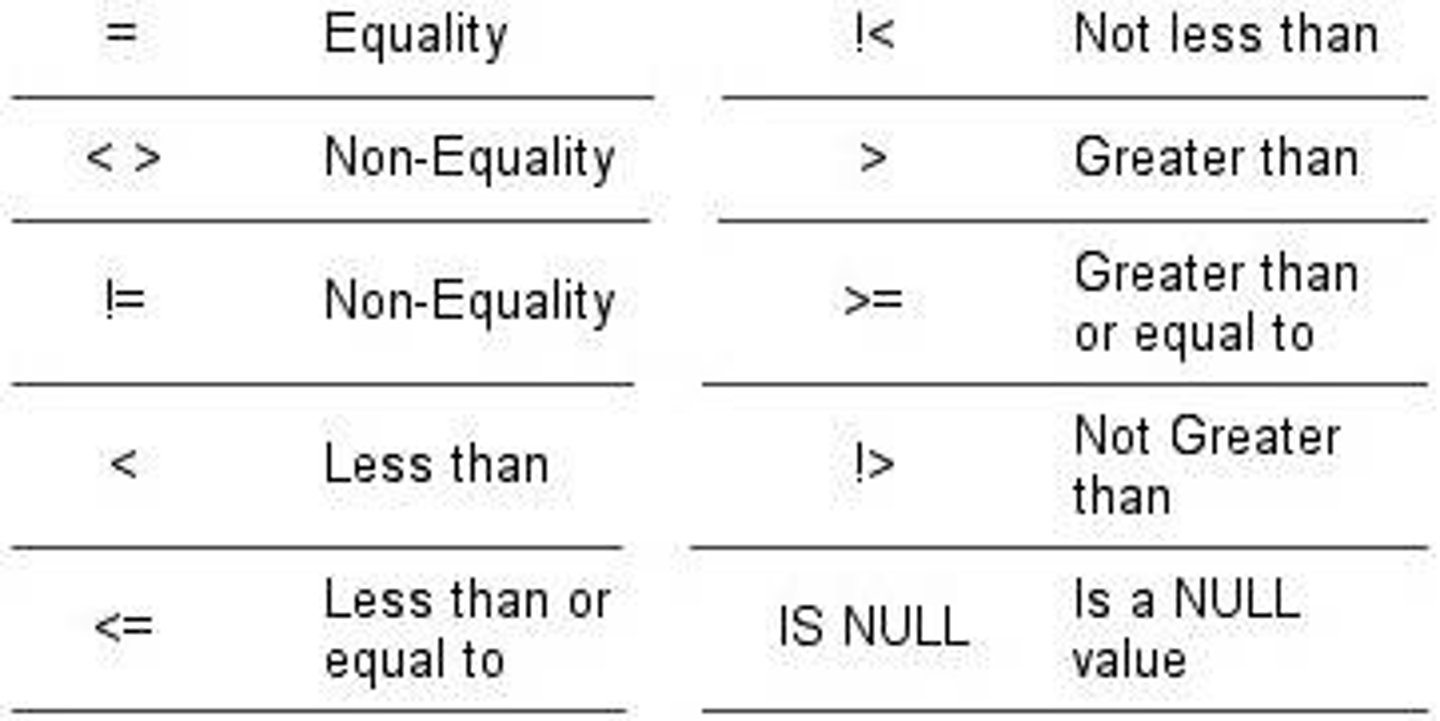Fiszki: SQL | Quizlet
1/31
There's no tags or description
Looks like no tags are added yet.
Name | Mastery | Learn | Test | Matching | Spaced |
|---|
No study sessions yet.
32 Terms
ASC keyword
Used to sort data in ascending order.
Data type
Specifies the type of data that a column can hold (e.g., text and numbers).
DESC keyword
Used to sort data in descending order
ORDER BY clause
Retrieves the name of one or more columns from the SELECT statement, and sorts (ascending or descending) the output.
Client
A single-user computer that interfaces with the multiple-user server.
Client/server database system
A system that divides processing between client computers and a database server.
Database
A collection of electronically stored organized files.
Server
A multiple-user computer that provides shared database connection, interfacing, and processing services.
Field
Column that runs vertically within a table.
Foreign key
Link records of one type with those of another type.
Keys
Uniquely identify a row or record in a table.
Normalization
A three-step technique used to organize data attributes in a more efficient, reliable, flexible, and maintainable structure.
Pprimary key
A field whose value uniquely identifies every row in a table.
Row
A record that represents a collection of information relating to an item in a table.
Table
Structured file containing rows and columns.
SQL Defined
SQL is a nonprocedural language that is used to manipulate and retrieve data from relational DBMSs such as Microsoft Access, DB2, Sybase, and Microsoft SQL Server. It is considered nonprocedural because of the way operations are carried out. Unlike procedural computer languages like Basic and C, which are concerned with how to perform operations, SQL describes what needs to be processed. The focus is on what to retrieve, delete, or insert.
Query
A question or command you pose concerning data from the database.
Parts of a query include the following:
Clause
A segment of an SQL statement combined to form a complete SQL statement.
Parts of a query include the following:
Keywords
Reserved words that allow you to communicate with a database.
Parts of a query include the following:
Statement
Keywords and data supplied within an SQL query.
Keywords:
FROM keyword
Used to tell the database which table to retrieve the columns from.
Keywords:
SELECT keyword
Used to tell the database which column(s) to display.
Syntax Rules
Syntax refers to the rules that govern how a programming language must be written.
Comparison Operators

Comparison Operators
The comparison operators are used to compare expressions. An expression is any data type that returns a value
Arithmetic Operators
Plus (+)
Minus (-)
Divide (/)
Modulus (%)
Multiply (*)
Sorting Data Using the WHERE Clause
The ability to sort data further enhances the data-retrieval process. Sorting data involves filtering and arranging retrieved data in a customized fashion. In SQL, this is achieved by using the following clauses:
GROUP BY
HAVING
ORDER BY
STARTING WITH
WHERE
Asterisk wildcard character (*)
When used with the LIKE operator, you can match any number of occurrences of any character.
Brackets wildcard character ( [] )
When used with the LIKE operator, you can specify a set of characters that match a character in a specific position.
LIKE operator
A character operator. When used in conjunction with asterisks or brackets, matches parts of a value within a table.
IN operator
A miscellaneous operator that provides a shorter method for specifying a range of conditions.
NOT operator
A logical operator used to match any condition opposite of the one defined.